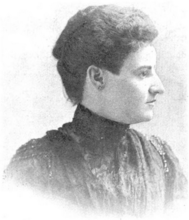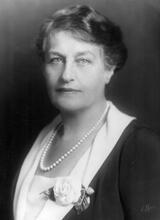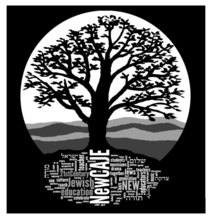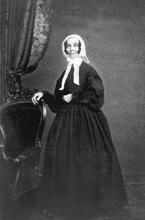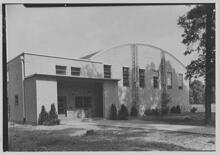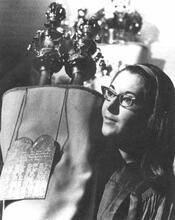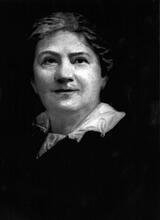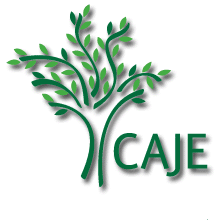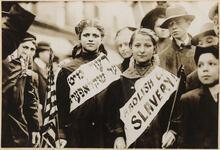Teaching Profession in the United States
Jewish women in America became professional teachers to an extent unprecedented in Jewish history. Throughout the nineteenth and twentieth centuries, female Jewish teachers flocked into both public and Jewish education, causing the teaching profession to emerge as a primary occupational niche for Jewish women in America. This emergence is remarkable considering that, in the premigration world of most Jewish immigrants, women were virtually excluded from teaching in any official capacity. While the number of Jewish female teachers increased throughout the world in the early twentieth century, their rise was most spectacular in America, where they predominated in both secular and Jewish schools. The increased involvement of Jewish women in the teaching profession had a formative impact on both public and Jewish education in America.
Introduction
The notion of a female teacher charged with the task of educating both boys and girls was inconceivable for most Central and Eastern European Jews. The very act of learning had been traditionally reserved for men, and teaching, an occupation saturated with religious overtones, remained indisputably a male domain. Although in Eastern Europe Jewish women often taught young girls rudimentary skills such as reading and writing Yiddish, the official teachers of the Jewish community were always male. Only in the last quarter of the nineteenth century did Jewish women in Eastern Europe manage to establish and teach in their own private schools.
The official exclusion of women from the teaching profession began to change dramatically at the beginning of the twentieth century. European Jews began to reconfigure traditional female Jewish education in an attempt to combat the erosion of traditional values and observance. New Jewish schools for girls were opened in such places as Vilna, Warsaw, Istanbul, and Rhodes, and each school demanded an increased number of Jewish female teachers.
In the New York City school system—the largest public school system in the world—Jewish women comprised fifty-six percent of the new teaching staff in 1940 and were the majority of the public-school teaching staff until 1960. By 1982, female teachers in Jewish schools comprised approximately eighty percent of the teaching staff.
Jewish Women and the Public School System
Jewish female teachers have played an active and important role in the New York City public school system for the last 150 years. Starting in the nineteenth century, teaching in the system became feminized through the efforts of a group of young middle-class women. The life of Julia Richman, a member of this vanguard group of teachers, exemplifies the critical role played by Jewish women in the feminization of the New York City school system. Like other female educators of her generation, Richman worked for over a decade as an elementary school teacher before she became the superintendent for the Lower East Side school district. The child of middle-class immigrants from Bavaria, Richman remained single throughout her career, like many of her contemporary female educators. Her experiences suggest that the lives of Jewish female teachers in the late nineteenth century were strikingly similar to their Christian sisters. A teaching career was the only appropriate profession for a single middle-class woman.
Many nineteenth-century women, like Julia Richman, were drawn to teaching for its respectability, prestige, and perhaps as an appropriate substitute for marriage, but these factors appear to have been of less significance for Jewish women in the next century. By the twentieth century, few Jewish female teachers remained single. The majority combined marriage and child rearing with their teaching careers. This new type of teacher became the norm as a result of several court decisions that forced the public school system to abolish its “marriage bar,” which tacitly prohibited women’s employment after marriage. Moreover, these legal decisions mandated that the New York City public school system allow female teachers to return to work even after childbirth.
In addition to this new legislation, most twentieth-century Jewish teachers were Eastern European immigrants whose financial needs required a combination of work and marriage. Entering the United States with little money, Eastern European Jewish women wanted to find a respectable profession but were focused primarily on earning a living. They sought an occupation, like teaching, that was socially acceptable and provided a stable income. Although teacher training required considerable financial and time commitments, the eventual stability of a teaching career appears to have outweighed all the sacrifices in the minds of many young Jewish women. As one teacher claimed in Ruth Markowitz’s study of female Jewish teachers in New York City public schools, Jewish immigrant mothers in the early twentieth century often advised their sons to marry teachers, since they could then rely on their wives to bring home a steady, significant income. The importance of a stable income was even more critical for many Jewish women who entered the teaching profession during the Depression era when securing ongoing employment was a primary concern.
Family social aspirations combined with these practical economic needs to further encourage Jewish women to pursue teaching careers. Many Jewish immigrant parents hoped that their children would be able to move up the economic and social ladders. In the eyes of most immigrant parents, white-collar work provided the most desirable way to achieve such mobility. However, Jewish women who tried to pursue careers in white-collar work were met by overt discrimination, particularly evident during the Depression era when companies regularly advertised clerical positions for non-Jews only. Since most avenues of white-collar work were closed to Jewish women in this era, public education emerged as the ethnic niche for second-generation Jewish women who desired social mobility.
Economic factors and the social aspirations of Jewish families played an important role in drawing Jewish women to teaching, but many were also drawn to this profession as a result of their own personal experiences, goals, and dreams. The favorable experiences of young Jewish immigrant girls in the New York City public school system appear to have played a crucial role in their future career paths. Sydney Stahl Weinberg notes that Jewish girls sought free secular education in the United States, because they rarely had such opportunities in Eastern Europe.
Consequently, young Jewish women were more enthusiastic about education, and later about teaching, than young women from any other ethnic group. From their entrance into school, Jewish girls held their teachers in particularly high esteem, for teachers helped them transform from immigrants into Americans. This esteem and enthusiasm for school encouraged many Jewish women to continue their education, and often attracted them to a professional career in teaching.
Whether a Jewish woman was drawn to teaching in search of prestige, personal fulfillment, or economic stability varied according to each individual. What is quite clear, however, is that Jewish women flooded this occupation at an extraordinary rate. The preponderance of Jewish women in the system had a formative impact on the organization of the New York City school system. Ruth Markowitz suggests that the activities of Jewish women helped bring about the unionization of public-school teachers in New York City.
Female Jewish teachers flocked to join the Teachers Union—Local 5 of the American Federation of Teachers—and provided it with much-needed membership and support. Jewish women also provided these unions with innovative leadership. As early as 1925, half of the Teachers Union executive board were Jewish women. Rebecca Coolman Simonsohn is just one example of a Jewish woman who played an important leadership role in the New York City teachers’ unions. Joining the Teachers Union soon after she began teaching in 1921, Simonsohn would later join the Teachers Guild, a teachers’ union founded in 1935. Simonsohn not only served as president of the Teachers Guild from 1941 to 1953, but she was also a vice president of the American Federation of Teachers and a member of the board of examiners.
Aside from facilitating the unionization of the New York City school system, female Jewish teachers and their experiences illustrate one of the ways in which second-generation Eastern European Jews became entrenched in the middle class. Their experiences demonstrate how women, rather than men, were often the first members of Jewish immigrant families to enter the professional class. Traditionally, scholars have utilized male earnings to chart and assess Jewish immigrant mobility. However, the experiences of Jewish women in the field of public education clearly illustrate the critical role played by women in this process. Jewish women entered the professional field of teaching almost a generation earlier than their male coreligionists entered other professional fields such as law or medicine. Thus, female Jewish teachers were the harbingers of Jewish class mobility, and their experiences suggest that gendered notions of mobility have obscured remarkable trends in the first-generation of immigrants.
Jewish Female Teachers and Jewish Education
When Jewish Eastern European immigrant women became teachers in the New York City public school system in the early twentieth century, they brought about radical changes in the ethnic composition of the teaching staff. They did not, however, introduce any alterations to the gender composition of the teaching staff, for they had entered a profession that had already undergone the process of feminization. In sharp contrast, American Jewish women who entered the Jewish teaching profession were pioneers who helped transform this field. While they comprised a majority of teachers in Jewish educational institutions by the end of the twentieth century, their dominance in this field did not seem likely at the beginning of the century, and their rise did not occur in a gradual or consistent manner.
It is difficult to assess the gender composition of Jewish teachers before the early twentieth century, for no surveys exist concerning the status of the Jewish teaching profession. Surveys from the first several decades of the twentieth century reveal the increase of female teachers in Jewish schools between 1916 and 1930. Women comprised between one-fifth and one-fourth of the teaching staff in Jewish educational institutions in 1916. By 1930, female teachers constituted one-third of this profession. The most significant increase of Jewish female teachers occurred in once-a-week supplementary schools. In 1916, women constituted one-half of the teaching staff, and by 1930, they comprised over two-thirds.
A revolutionary change in attitude complemented the increased participation of female teachers in Jewish schools. An article written by Mordecai Kaplan in 1932 demonstrates this change: The Jewish woman was not only considered an acceptable teacher for American Jewish children, but now emerged as the ideal Jewish educator. Kaplan argued that Jewish women’s “lack of tradition” made them better able to reevaluate their Jewish heritage. Thus, Kaplan asserted, only Jewish women had the innate skills to help the Jews of America become an important factor in “the spiritual destiny of world Jewry.”
As suggested by Kaplan’s article, leaders of the American Jewish community developed a radically new conception of the female Jewish teacher that elevated female teachers in America above their European forebears or even contemporary counterparts. Furthermore, Kaplan’s conception of the centrality of Jewish women to Jewish education suggests an ideological transformation that occurred in America concerning the relationship between gender and Jewish education.
Between the 1930s and 1960s, no significant shifts occurred in the gender composition of the Jewish teaching profession, possibly as a result of the influx of European refugee rabbis who arrived after World War II and who devoted themselves to Jewish education. A 1953 survey confirms that the gender composition of the Jewish teaching profession had barely changed since 1930. In twenty-seven communities throughout the United States, sixty-two percent of the teachers in Jewish educational institutions were male, while only thirty-eight percent were female.
While throughout the 1940s and 1950s the feminization of the Jewish teaching profession slowed significantly, by the 1960s and 1970s this process of feminization surged forward once again. The extent of this surge is evidenced by the fact that one 1967 study found that the typical Jewish schoolteacher was a young, single Jewish woman. By the 1980s, women constituted the vast majority of teachers in Jewish schools, as confirmed by a 1982 statistical study where women comprised ninety-eight percent of the teaching staff in Jewish elementary schools, seventy-five percent of the teaching staff in supplementary schools, and seventy percent of the staff in day schools.
Throughout the twentieth century, the feminization of Jewish education was most directly influenced by religious denomination. As early as 1930, studies demonstrated that the gender composition of the teaching staff was directly correlated with the denominational affiliation of the school. For example, in once-a-week Jewish schools belonging to the Reform Movement, two-thirds of the teaching staff was female in 1930, while in communal and congregational Lit. "study of Torah," but also the name for organizations that established religious schools, and later the specific school systems themselves, including the network of afternoon Hebrew schools in early 20th c. U.S.Talmud Torahs, male teachers still predominated. By 1944, the typical Reform religious schoolteacher was a twenty-one-year-old female. While communal and Orthodox schools were still dominated by male teachers in the 1950s, the Reform school teaching profession had already been completely feminized.
In addition to religious denomination, the feminization of the teaching staff in Jewish schools was also facilitated by the new place of Jewish education within the lives of American Jews. As supplementary education grew to be the primary medium through which Jewish education was conveyed to Jewish children, men—for whom part-time work was not acceptable—were forced to pursue more lucrative “full-time” work. As a 1964 study claimed, each year seventy-five percent of young Jewish men left the Jewish teaching profession for other professions. They saw Jewish education only as “a temporary economic springboard.”
For Jewish women, on the other hand, part-time work was extremely attractive, for it allowed them to combine work with family responsibilities. Furthermore, as Jewish men moved up the economic ladder throughout the 1950s and 1960s, it became unnecessary—and in some cases, even socially inappropriate—for Jewish women, as middle-class wives, to work full-time. Thus, the “part-timeness” of Jewish education, which became particularly prevalent during the 1960s, caused the Jewish teaching profession to emerge as an extremely appropriate occupation for women and an almost implausible one for men.
In the second half of the twentieth century, with the rise of supplementary schools, Jewish education more often focused exclusively on younger children—another factor that encouraged the feminization of Jewish education. In the Old Country, it was acceptable for men to educate young Jewish boys. In America, however, secular cultural trends reserved elementary education for women. Consequently, female Jewish teachers predominated in this field from the early 1930s and continued to dominate throughout the century. As Jewish elementary school programs grew throughout the course of the late twentieth century, female teachers began to comprise a larger percentage of the Jewish teaching profession.
With the exception of ultra-Orthodox yeshivas and some Orthodox day schools, most teachers today involved in Jewish education are female. The feminization of the Jewish teaching profession would not have been possible if not for the part-time nature of this profession and the commensurately low salaries paid to its teachers. The feminization of the Jewish teaching profession has recently become a topic of scholarly inquiry, as Jewish educators have turned their attention to the correlation between this occurrence and the general devaluation of Jewish education in the latter half of the twentieth century.
Concern over this devaluation has spurred the development of several innovative educational organizations over the last several decades, and Jewish women have played a major role in shaping these agencies. Of these organizations, the Conference on Alternatives in Jewish Education (CAJE), renamed the Coalition for the Advancement of Jewish Education in 1987, provided one of the best examples of the creative and critical contributions that female Jewish teachers continue to make to the field of Jewish education.
Founded in 1977 as a result of the tireless efforts of Cherie Koller-Fox and Jerry Benjamin, this grass-roots organization of Jewish teachers was greatly enriched through the leadership of many accomplished female Jewish educators, most notably Betsy Dolgin Katz, Carol Starin, and Sylvia Abrams. Awarded numerous prizes for its programming, curriculum banks, and conferences, CAJE brought together both lay and professional Jewish educators from across the ideological spectrum for their annual conferences; it became the main support agency for Jewish teachers throughout North America. CAJE closed in 2009; Cherie Koller-Fox founded a new organization, NewCAJE, in 2010.
Through Jewish educational organizations, Jewish schools, and public schools, female Jewish teachers have played an important role in shaping the North American teaching profession. Over the last 150 years, American Jewish women have been drawn to teaching in both public and Jewish schools by a multitude of factors. The massive influx of Jewish women into teaching was clearly informed by the larger global feminization of the teaching profession. Throughout this period, however, numerous social, cultural, and economic factors distinctly shaped the experiences of Jewish female teachers in America. These unique circumstances allowed Jewish female teachers to play a formative role in shaping both public and Jewish education in America.
Brooks, T. Towards Dignity: A Brief History of the UFT (1967).
Chipkin, Israel. “The Jewish Teacher in New York City and the Remuneration for His Services.” Jewish Education 2, no. 3 (Fall 1930): 165–175.
Cohen, J. Jews, Jobs and Discrimination: A Report on Jewish Non-Employment (1937): 13–18.
Dellapergola, S., and A. Dubb, A. First Census of Jewish Schools in the Diaspora, 1981/2–1982/3 (1986).
Dushkin, Alexander. “Supply and Training of Teachers for Jewish Schools in the Diaspora.” Jewish Education 35, no. 1 (Fall 1964): 22–37.
Ingall, Carol. “The Feminization of Jewish Education.” The Melton Journal (Fall 1987): 11.
Ingall, Carol K. The Women who Reconstructed American Jewish Education, 1910 (2011).
Jaffe, Philip. “Study of Two Hundred and Forty Teachers in the Reform Religious Schools of New York.” The Jewish Teacher 12, no. 2 (January 1944): 23–35.
Janowsky, Oscar, ed. The Education of American Jewish Teachers (1967).
Kaplan, Mordecai. “What the American Jewish Woman Can Do for Jewish Education.” Jewish Education 4, no. 3 (Fall 1932): 139–147.
Markowitz, Ruth. My Daughter, the Teacher: Jewish Teachers in the New York City Schools (1993).
Monson, Rela Geffen. “What We Know About Women and Jewish Education.” In What We Know About Jewish Education: A Handbook of Today’s Research for Tomorrow’s Jewish Education, edited by S. Kelman (1992).
Weinberg, Sydney Stahl. “Longing to Learn: The Education of Jewish Immigrant Women in New York City, 1900–1934.” Journal of American Ethnic History 8 (Spring 1989): 108–126.



